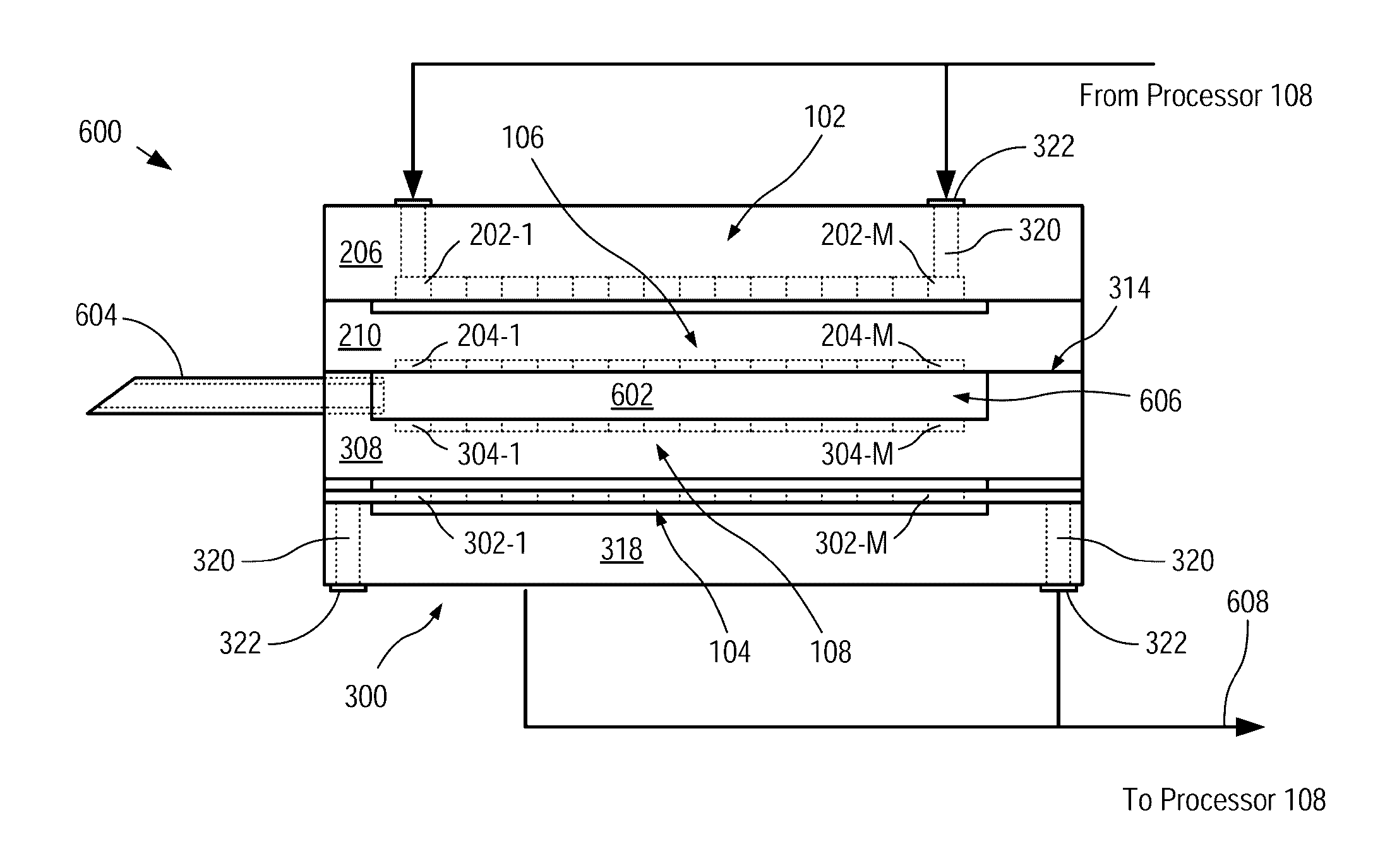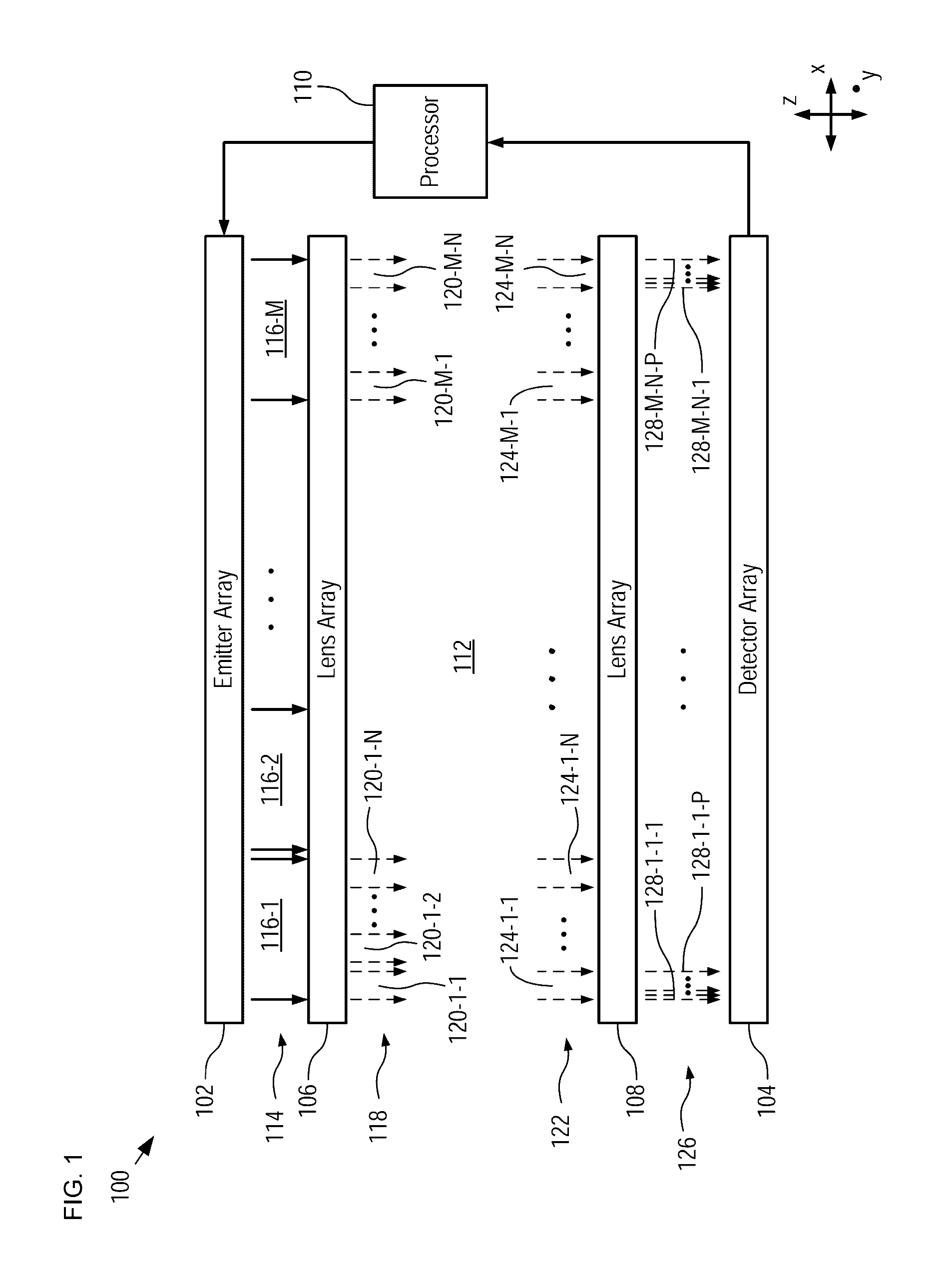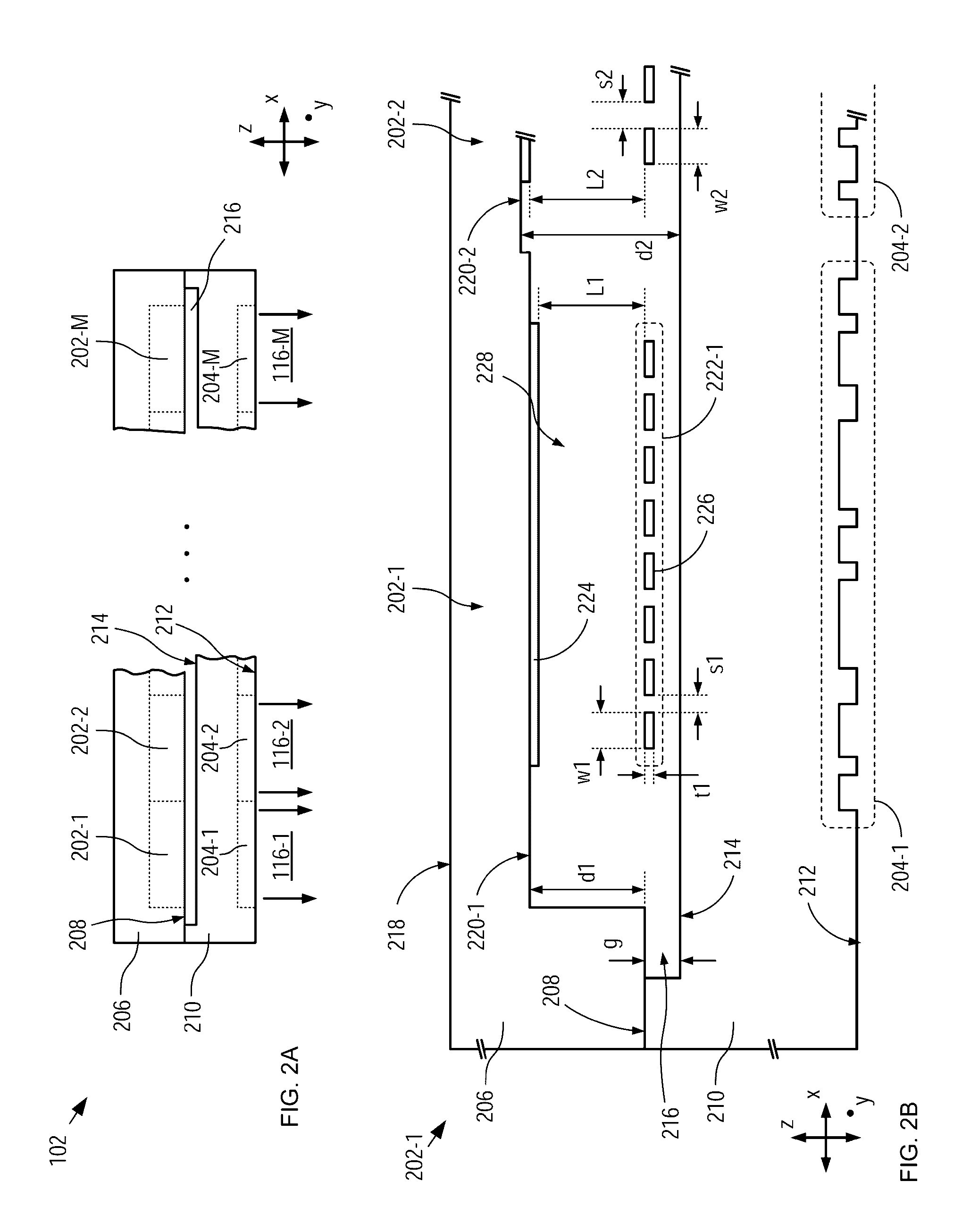Mid-infrared hyperspectral spectroscopy systems and methods therefor
a hyperspectral spectroscopy and mid-infrared technology, applied in the field of systems and methods for hyperspectral spectroscopy, can solve the problems of inability to effectively identify many chemicals, narrow bandwidth of conventional mir spectrometers, and inability to accurately identify chemicals, etc., to achieve the effect of improving system sensitivity
- Summary
- Abstract
- Description
- Claims
- Application Information
AI Technical Summary
Benefits of technology
Problems solved by technology
Method used
Image
Examples
Embodiment Construction
[0036]In is an aspect of the present invention that significant advantages over MIR spectroscopy systems of the prior art are derived by employing a hierarchical wavelength-segmentation approach. In embodiments of the present invention, the MIR spectrum is segmented into a plurality of spectral sub-ranges by employing an array of emitters, each of which emits radiation in only one of the spectral sub-ranges. The radiation from each emitter is further segmented by directing it only onto a detector comprising a plurality of detector pixels, each of which selectively detects radiation in a sub-portion of the spectral sub-range of that detector. Further, each detector is optically coupled with its respective emitter via a filter element that directs each sub-portion to its corresponding detector pixel. The use of multiple emitters in an array, along with diffractive optical filters that match those sources with spectrally selective detector elements, the entire MIR spectrum can be detec...
PUM
| Property | Measurement | Unit |
|---|---|---|
| wavelengths | aaaaa | aaaaa |
| wavelengths | aaaaa | aaaaa |
| wavelength selectivity | aaaaa | aaaaa |
Abstract
Description
Claims
Application Information
 Login to View More
Login to View More - R&D
- Intellectual Property
- Life Sciences
- Materials
- Tech Scout
- Unparalleled Data Quality
- Higher Quality Content
- 60% Fewer Hallucinations
Browse by: Latest US Patents, China's latest patents, Technical Efficacy Thesaurus, Application Domain, Technology Topic, Popular Technical Reports.
© 2025 PatSnap. All rights reserved.Legal|Privacy policy|Modern Slavery Act Transparency Statement|Sitemap|About US| Contact US: help@patsnap.com



